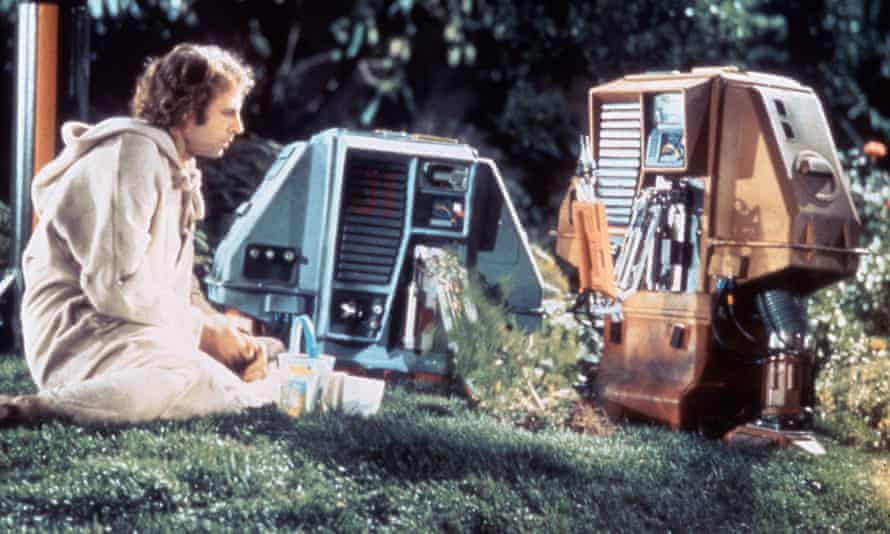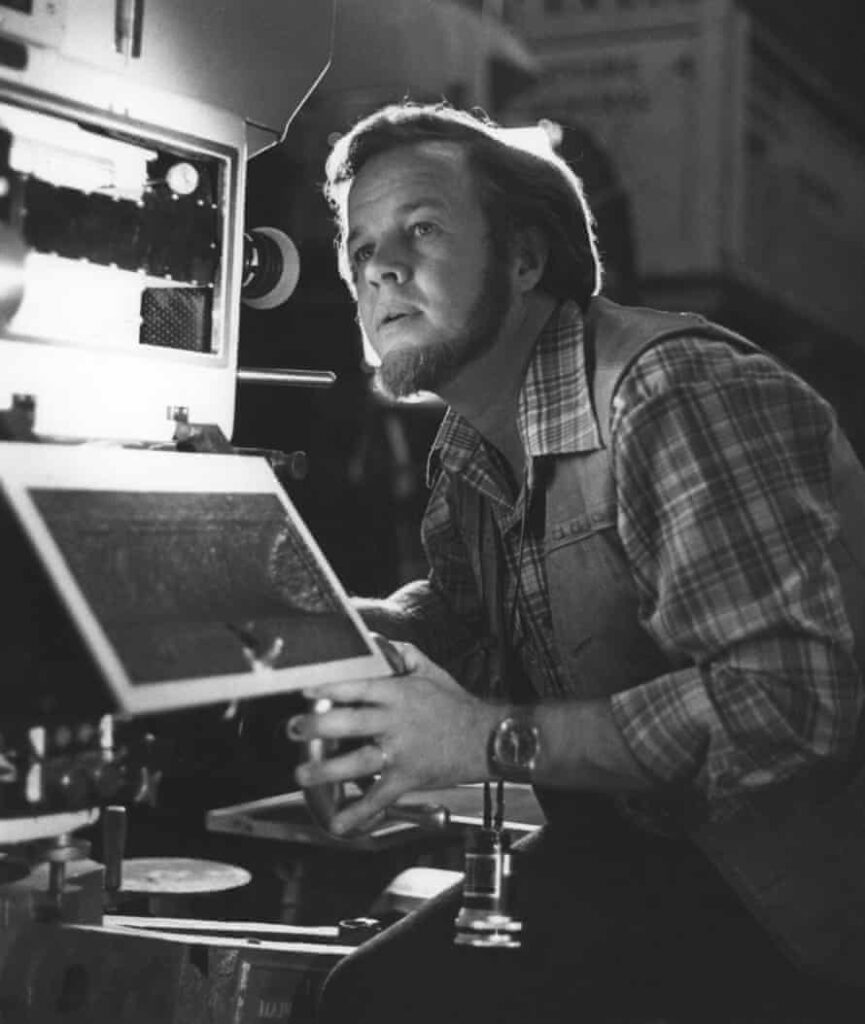Shared from Culture | The Guardian
Asked in 1978 to describe his job, the visual effects pioneer Douglas Trumbull said: “I’m in the area of creating experiences that are beyond the realm of physical reality.” Trumbull, who has died aged 79 from cancer, was instrumental in bringing to the screen three of the greatest science-fiction films ever made: Stanley Kubrick’s 2001: A Space Odyssey (1968), Steven Spielberg’s Close Encounters of the Third Kind (1977) and Ridley Scott’s Blade Runner (1982).
He was 23 when he began working with Kubrick. During a production schedule that lasted for more than two years, he went from designing graphics for the film’s computer screens to masterminding the kaleidoscopic “star gate” sequence, in which the astronaut Dave Bowman, played by Keir Dullea, passes through an intergalactic corridor of streaking, coloured light.
“We had to build new equipment, we had to build new types of cameras, we had to build lighting systems,” said Trumbull. He adapted the “slit-scan” photography technique, placing in front of the lens a giant movable slide with an aperture. To this set-up, he then added a backlit glass panel on to which patterns were projected while being photographed with a long exposure camera. Six months of experimentation produced the spectacular psychedelic effects that would endear the film to the acid-dropping midnight-movie crowd, while leaving sober viewers just as dazzled and disoriented. “We wanted the audience to feel like they were actually going to space,” he said.
For Close Encounters of the Third Kind, he made advances in motion control photography to enable the camera to tilt and move for the first time with special effects in the frame. (Most effects shots prior to that had been static.) He also conjured the baleful cloud formations that precede the approach of the alien mothership. This he achieved by introducing white liquid paint into a colossal aquarium tank filled with water. “If Trumbull hadn’t accepted the job, I’d still be on the Columbia backlot, trying to get a cloud to materialise out of thin air,” said Spielberg.
His contributions to Blade Runner included the moving images on the sides of skyscrapers and blimps, as well as the liberal use of smoke. Scott’s film earned Trumbull a third Oscar nomination following previous ones for his work on Close Encounters and Star Trek: The Motion Picture (1979). On the latter title, he was entrusted with directing several sequences, including Spock’s space walk, during which Trumbull paid homage to his own work on 2001.
He already had one directorial credit under his belt by then: the prescient and poignant Silent Running (1972), which starred Bruce Dern as a botanist tending to Earth’s last remaining forest. Rescued from the planet, which is now denuded of all plant life, the flora is contained within greenhouse-like bio-domes on a spaceship called the Valley Forge. Though the film was retitled in some territories as 2002: The Second Odyssey, it was far more modest in scale than Kubrick’s work. Instead of the plush bombast of Strauss on the soundtrack, Trumbull used original songs by Joan Baez to establish a reflective tenor.
Trumbull was born in Los Angeles, to Marcia Hunt, an artist, and Donald Trumbull, a special effects rigger whose credits included The Wizard of Oz (1939) and, later, the original Star Wars (1977), which Douglas had turned down. Though Donald moved into the aerospace industry after Douglas was born, father and son ended up working on several of the same films. On Silent Running, Douglas hired his father to oversee the trio of waddling robots, named Huey, Dewey and Louie after Donald Duck’s nephews.

Douglas was educated at Morningside high school and El Camino college in LA County. He parlayed his enthusiasm for science fiction and his skill at drawing into work as a background illustrator at Graphic Films, a Los Angeles studio making animated simulations for Nasa. To the Moon and Beyond, a short which screened at the 1964 New York World’s Fair, brought him to Kubrick’s attention. “It just turned out that I had this weird skill set that lent itself to what his needs were,” he said, “and I started solving some problems and building weird gizmos for photography.”
He was surprised to find that the technological gauntlet thrown down by Kubrick’s movie was not widely taken up by other film-makers. “We thought at the time that 2001 would start a big trend,” he said. “It really didn’t … The main effect it had … is that people look at 2001 and say: ‘No one’s ever going to do this again …’”
A stint doing effects work on the ending of Zabriskie Point (1969) was short-lived. He was fired by the director, Michelangelo Antonioni, who chose instead to use more traditional techniques. (Trumbull later incorporated into Blade Runner some of the footage he had shot for Antonioni.) He developed for The Andromeda Strain (1971) a camera that could relay images seen through a microscope. In 1974, he established with Richard Yuricich a special effects research facility to explore new technology.
In 1983, he directed his second feature, Brainstorm, a thriller about a device that enables users to experience pre-recorded sensations uploaded on to a virtual reality-style headset, from the giddiness of a rollercoaster ride to the horror of a heart attack. Trumbull was unsuccessful in his attempt to convince MGM to let him make the movie in his own pioneering Showscan format, which projected 70mm film at 60 frames per second, rather than the usual 24. The film was greeted with lukewarm reviews, and came to be associated with the death of its star, Natalie Wood, who drowned in suspicious circumstances during a break from production.
Trumbull distanced himself from the industry after this, though he continued to work in the field of technical innovation and immersive entertainment. He designed the Back to the Future ride at the Universal theme park in Florida, and helped to popularise the Imax format. He also worked on sequences imagining the creation of the universe in Terrence Malick’s The Tree of Life (2011).
It was that early collaboration with Kubrick, though, that lingered throughout his life in good ways and bad. Though he referred to the director as his “mentor”, the pair fell out after Kubrick, credited on screen as the designer and director of the “special photographic effects”, won a visual effects Oscar for the film. Trumbull, who was credited along with three colleagues as “special photographic effects supervisor”, believed the director ought to have insisted on sharing the award. A rapprochement of sorts was initiated by Trumbull, who phoned the director out of the blue in the 1990s to thank him for the effect he had on his career.
Trumbull is survived by his third wife, Julia Hobart, whom he married in 2012, and by two daughters, Amy and Andromeda, from his first marriage, to Cherry, which ended in divorce. His second wife, Ann Vidor, died in 2001.
Images and Article from Culture | The Guardian

